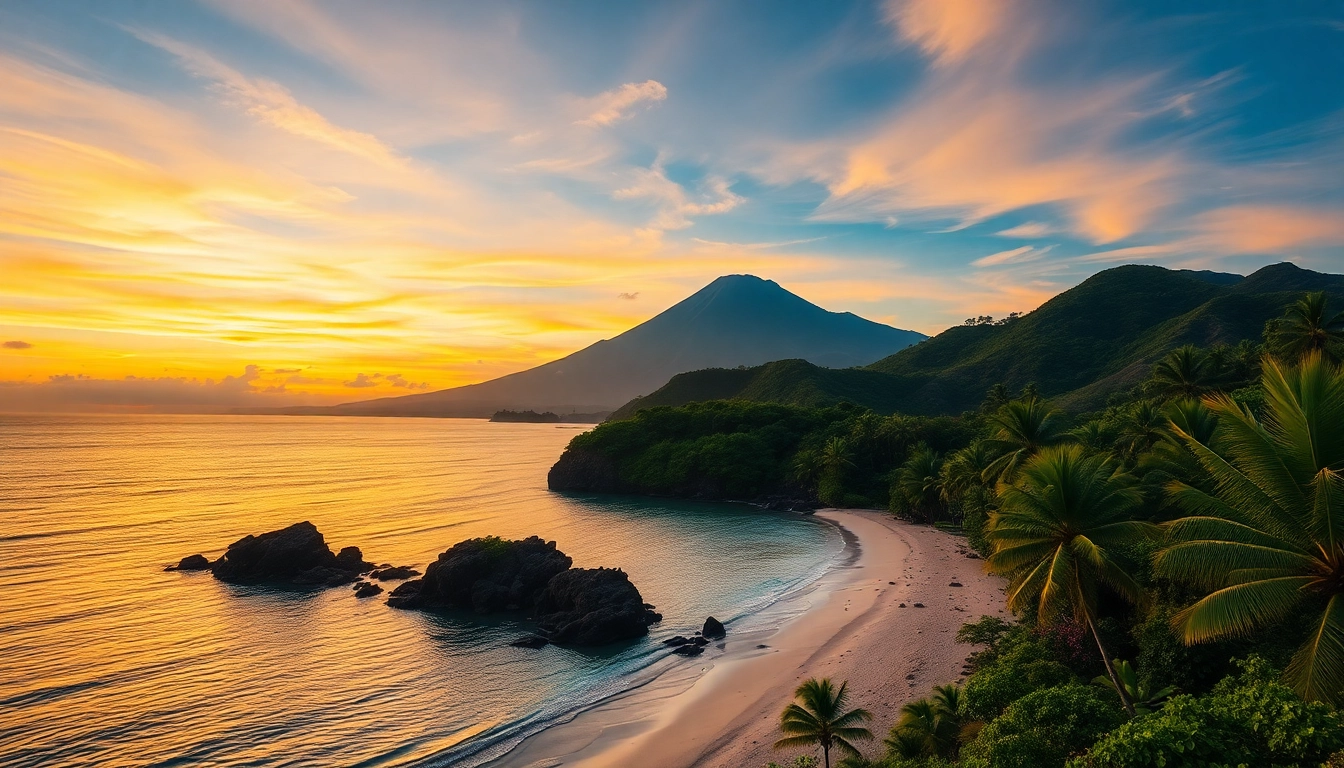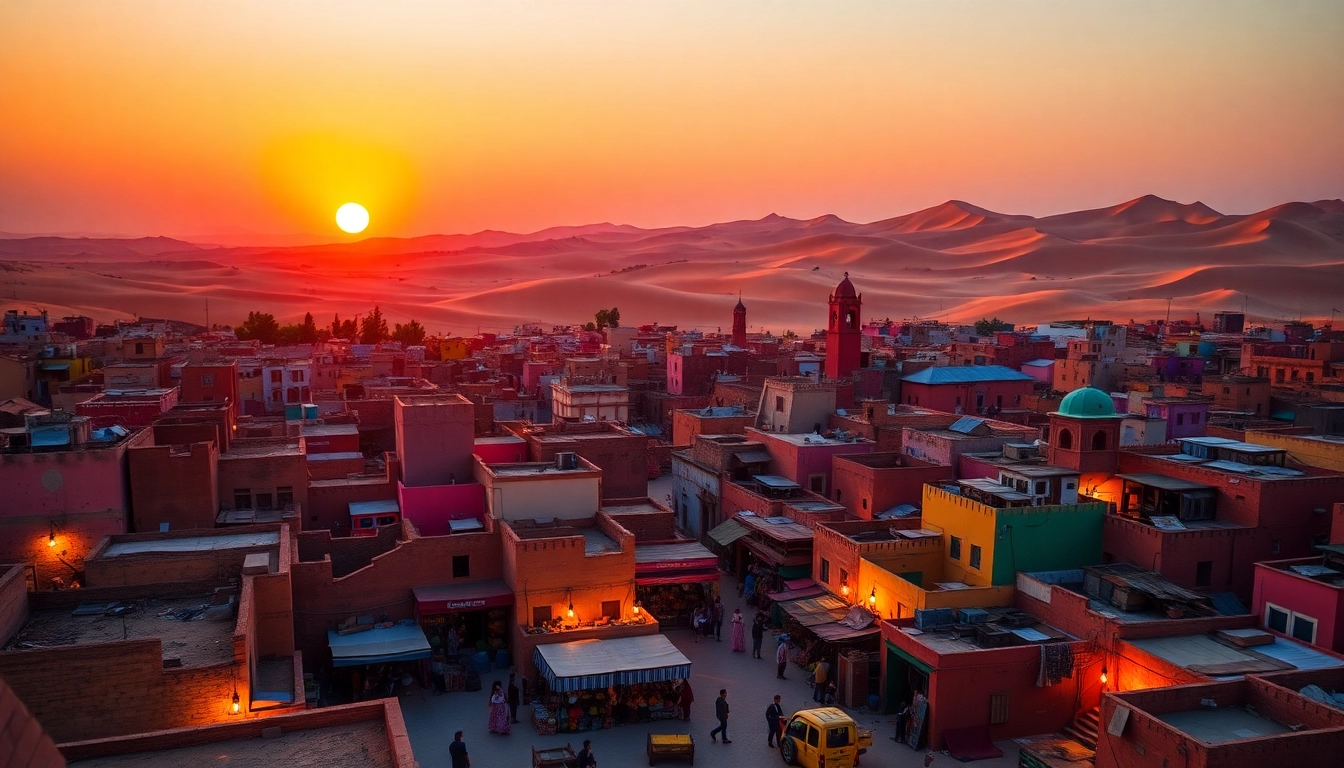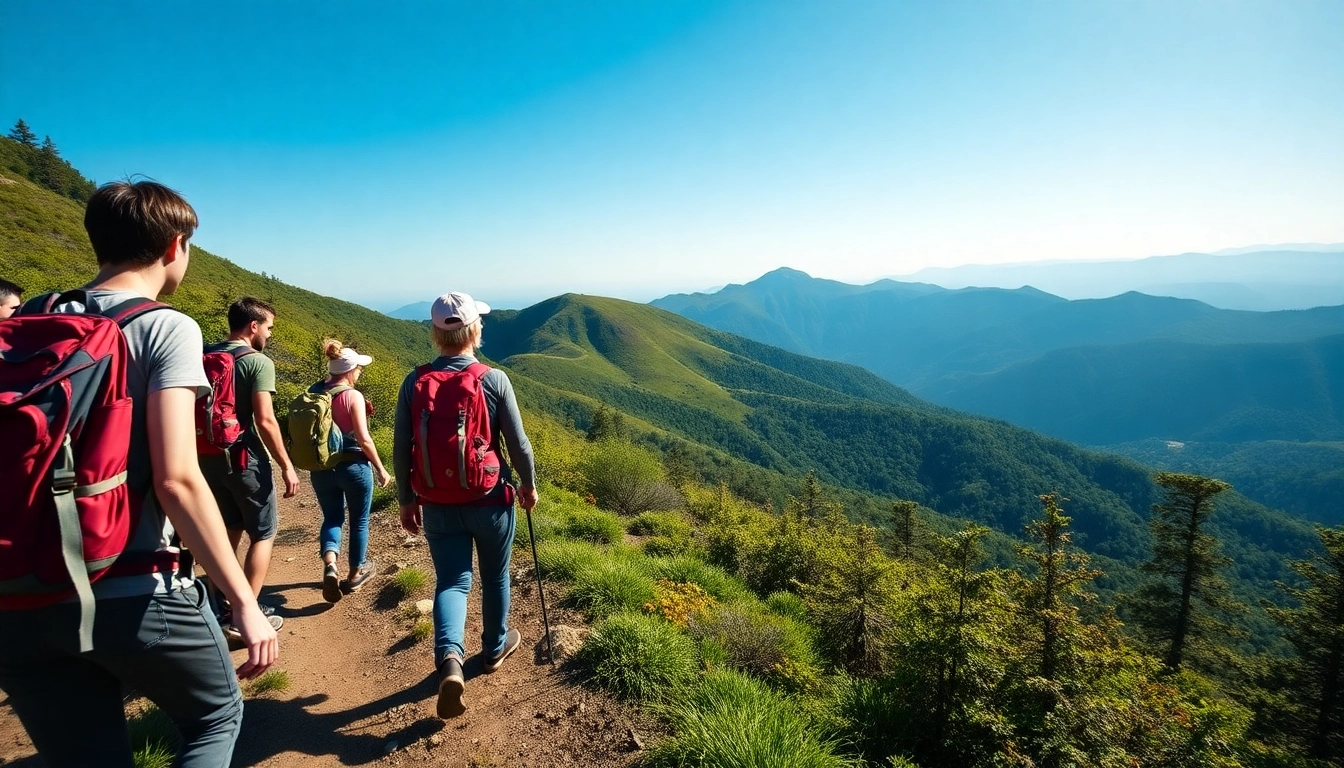Introduction to Lombok: Indonesia’s Hidden Paradise
Nested within the diverse archipelago of Indonesia, Lombok stands out as a captivating destination that seamlessly blends natural beauty, rich culture, and adventurous allure. Often overshadowed by its famous neighbor Bali, Lombok offers travelers an authentic Indonesian experience with fewer crowds and more pristine environments. For those seeking a unique travel escape, exploring Lombok promises a journey filled with stunning landscapes, vibrant traditions, and adrenaline-pumping activities. This island is not only a feast for the eyes but also a repository of cultural depth, making it a must-visit for adventurers, history enthusiasts, and eco-conscious travelers alike.
Geographical Overview of Lombok Island
Lombok is part of the Lesser Sunda Islands chain, situated in the West Nusa Tenggara province of Indonesia. Covering approximately 4,725 square kilometers, it is geographically positioned east of Bali and separated from the Sumbawa Island by the Alas Strait. The island’s topography is characterized by a rugged terrain crowned by the towering Mount Rinjani, Indonesia’s second-highest volcano, rising 3,726 meters above sea level. The landscape boasts lush rainforests, volcanic valleys, and a diverse coastline dotted with idyllic beaches and vibrant coral reefs.
The island’s surrounding waters are equally impressive, featuring marine biodiversity that sustains local fisheries and supports world-class diving and snorkeling sites. Lombok’s geographical features—including its volcanic activity—have shaped its climate, which ranges from tropical savanna near the coast to montane moist forests in the highlands. The coastal areas enjoy warm temperatures year-round, making them perfect for beach lovers and water sport enthusiasts.
Strategically, Lombok’s location offers easy access via air and sea, with Lombok International Airport serving as the primary gateway. Ferry routes connect the island to Bali and other surrounding islands, facilitating seamless travel for tourists exploring the region. The geographic positioning not only influences its climate and ecosystems but also underscores its potential as a hub for eco-tourism and sustainable development initiatives.
Historical and Cultural Significance
Historically, Lombok has been a melting pot of indigenous traditions and external influences, notably from Indian, Chinese, and later Arab traders. The island’s most profound cultural identity is rooted in the Sasak people, who comprise the majority of its population. Their rich cultural heritage is evident through traditional architecture, weaving, music, dance, and unique religious practices.
Although Lombok’s history includes periods of indigenous isolation, it actively participated in regional trade networks, which facilitated the exchange of crafts, ideas, and beliefs. The island’s religious landscape predominantly features Islam, which influences daily life, festivals, and social norms. Notably, several centuries-old mosques and cultural sites offer glimpses into Lombok’s spiritual fabric.
One of the most iconic historical landmarks is the *Lingsar Temple*, a sacred site for both Hindus and Muslims, symbolizing religious coexistence. Additionally, the remains of ancient settlements provide archaeological insights into Lombok’s early civilizations and trading histories.
The colonial era introduced new elements, such as Dutch influences in governance and architecture, but Lombok has maintained its traditional roots through vibrant cultural festivals like *Kharafah*, which celebrates agricultural bounty and community unity. Today, this blend of history and culture continues to define Lombok’s identity, making it a vibrant canvas of tradition and resilience.
Key Attractions and Why Lombok is a Must-Visit Destination
Lombok’s allure lies in its diverse attractions that cater to nature lovers, culture buffs, and adventure seekers. From breathtaking natural landscapes to culturally immersive experiences, the island provides a comprehensive itinerary for any traveler.
Top highlights include the world-renowned Mount Rinjani, stunning beaches with crystal-clear waters, and vibrant traditional villages. Its less exploited status compared to Bali maintains an authentic charm, ensuring visitors experience the true essence of Indonesian hospitality and natural splendor.
Additionally, the island’s emerging eco-tourism initiatives aim to preserve its ecological integrity while providing enriching experiences. Whether seeking solitude on secluded beaches, conquering volcanic trails, or exploring cultural festivals, Lombok offers countless reasons to explore its diverse landscapes and cultural depths.
Top Natural Attractions in Lombok
Pantai and Beaches: White Sands and Crystal Waters
The coastal regions of Lombok are famed for their pristine beaches that boast soft white sands and azure waters. Pantai Tanjung Aan and Pantai Selong Belanak are among the most celebrated beaches, ideal for surfing, sunbathing, and family outings. These beaches are renowned for their gentle waves and clean shores, attracting surfers from around the world, especially during the dry season from April to October.
The Gili Islands (Gili Trawangan, Gili Air, and Gili Meno), located off Lombok’s northwest coast, are world-famous for their vibrant coral reefs and laid-back atmosphere. Gili Trawangan, for instance, is a hub for divers and snorkelers eager to explore underwater marine biodiversity, including manta rays and turtles.
Realizing the ecological significance of these coastal areas, many resorts and local organizations promote healthy reef preservation practices and eco-tourism, ensuring these natural wonders continue to enchant future generations.
Mount Rinjani: Hiking and Trekking Adventures
Standing majestically at 3,726 meters, Mount Rinjani is Indonesia’s second-highest volcano and a magnet for trekking enthusiasts worldwide. The Rinjani trekking circuit offers challenging, multi-day adventures that reward hikers with panoramic views, volcanic craters, and the chance to witness geothermal activity up close.
Most trekking journeys commence from Senaru or Sembalun villages, both equipped with guides and facilities catered to international tourists. The trek typically takes 2–4 days, depending on the route chosen, and includes visiting the Segara Anak crater lake and hot springs, as well as camping under star-studded skies.
Experts recommend proper preparation, outdoor gear, and awareness of volcanic activity alerts. Sustainable trekking practices are emphasized to minimize environmental impact, with local guides playing a vital role in conservation efforts.
Waterfalls and Marine Parks: Sendang Gile, Tiu Kelep, and Gili Islands
Lombok’s cascading waterfalls, such as Sendang Gile and Tiu Kelep in the north, are natural retreats surrounded by lush jungle and cool mountain streams. These waterfalls are accessible through guided treks suitable for most travelers and serve as serene spots for relaxation and nature photography.
The marine parks surrounding the Gili Islands are protected areas teeming with marine life, coral reefs, and underwater landscapes. Snorkeling here offers encounters with vibrant tropical fish, rays, and occasionally sharks, providing vital habitats that are protected through local conservation initiatives.
Protecting these ecosystems through eco-tourism and responsible tourism practices remains critical to maintaining their beauty and biodiversity—a challenge that local authorities and community organizations actively work to address.
Cultural Experiences and Local Traditions
Traditional Sasak Villages and Crafts
Immersing in Lombok’s culture begins with visiting Sasak villages such as Sade and Sukarara. Here, visitors observe traditional weaving, pottery, and Banteng cattle rituals, which have been passed down for generations. The distinctive Sasak architecture features bamboo and thatch roofing, reflecting harmony with nature.
Participation in craft-making workshops offers hands-on experience and fosters appreciation for local artisans’ skills. These activities not only preserve cultural heritage but also support community-based sustainable tourism.
Local Festivals and Ceremonies
Festivals like *Perang Topat*, a rice harvest celebration, and *Kerapan Sasak*, a traditional cattle race, showcase Lombok’s vibrant cultural identity. These events often involve elaborate processions, traditional music, dance, and offerings, providing profound insights into local spiritual beliefs and social cohesion.
Attending these festivals offers travelers authentic cultural immersion and opportunities to engage respectfully with local communities, fostering cross-cultural understanding and appreciation.
Cuisine and Culinary Delights Unique to Lombok
Lombok’s cuisine reflects its diverse heritage, featuring spicy flavors and fresh ingredients. Signature dishes include * AYAM TALIWANG* (grilled chicken seasoned with spices), *SATE BULAYAK*, and seafood specialties from the coastal regions. The island’s cuisine often incorporates coconut, chili, ginger, and tamarind, creating bold, vibrant flavors.
Local markets and warungs (small eateries) provide authentic culinary experiences where visitors can sample traditional dishes, often prepared with recipes handed down through generations. Food festivals celebrating local ingredients and dishes are excellent opportunities to indulge in Lombok’s gastronomic traditions.
Adventure and Eco-Tourism in Lombok
Surfing Hotspots and Water Sports
Lombok is renowned for its world-class surf breaks such as Desert Point, Bangko-Bangko, and Gerupuk. These spots attract surfers from all over, especially during the dry season. The island’s consistent swells and reef breaks generate challenging waves suitable for advanced surfers while offering smaller waves for beginners.
Beyond surfing, activities like kiteboarding, stand-up paddleboarding, and diving are thriving in Lombok’s protected waters. Eco-friendly surf camps and water sports centers emphasize environmental conservation and responsible tourism, ensuring the longevity of marine ecosystems.
Eco-Friendly Treks and Nature Excursions
In addition to Rinjani, Lombok offers various eco-sensitive tours, such as jungle trekking and birdwatching in Gunung Rinjani National Park or lakeside explorations in the lush forests of North Lombok. These eco-tours promote conservation awareness and minimal ecological footprints.
Organizations are increasingly adopting sustainable practices, including waste management, community involvement, and habitat preservation, to ensure Eco-tourism benefits both local populations and conservation efforts.
Wildlife Conservation and Sustainable Tourism Efforts
Recognizing the ecological importance of its marine and terrestrial biodiversity, Lombok has established conservation projects targeting turtles, coral reefs, and endemic flora and fauna. Initiatives include turtle hatcheries, coral reef restoration, and marine protected areas.
Community-based eco-tourism models actively involve local residents, providing alternative income sources that incentivize environmental stewardship. Promoting sustainable tourism policies is essential to maintaining Lombok’s natural allure amidst increasing visitor numbers.
Planning Your Lombok Vacation: Tips & Recommendations
Best Travel Seasons and Climate Conditions
The optimal time to visit Lombok is during the dry season from May to October, when the weather is sunny and humidity levels are lower. This period ensures pleasant days for outdoor activities, beach lounging, and trekking adventures. The rainy season, from November to April, can bring occasional downpours and higher humidity, potentially restricting outdoor plans but offering a lush landscape and fewer tourists.
Monitoring local weather forecasts and volcanic activity updates (especially near Mount Rinjani) is crucial for safety and planning purposes. The island’s weather patterns are generally predictable, but travelers should remain adaptable.
Accommodation Options and Local Hospitality
Lombok’s lodging spectrum ranges from luxury resorts and boutique hotels to budget guesthouses and homestays. Ubud-inspired villas and eco-resorts emphasize sustainability and offer panoramic views of mountains and beaches. The private villa market has grown, catering to high-end travelers seeking exclusivity and privacy.
In the cultural villages and rural areas, homestays provide authentic insights into local life, supporting community-based tourism initiatives. Hospitality standards typically emphasize warmth, personalized service, and cultural respect, making visitors feel at home during their stay.
Transport, Safety Tips, and How to Get Around
Transportation options include renting scooters, motorbikes, or cars—though driving licenses and safety precautions are recommended. Public transportation is limited, but private taxis and ride-hailing apps are available in main tourist areas. Boat transfers are common for reaching the Gili Islands and some remote beaches.
Safety considerations involve volcanic activity alerts, especially for Mount Rinjani treks, and beach safety due to strong currents in some coastal areas. Travelers should stay informed through local authorities and adhere to guided tour recommendations for adventure activities.
Effective planning and awareness of local customs and environmental practices will optimize safety and experience during the trip.



